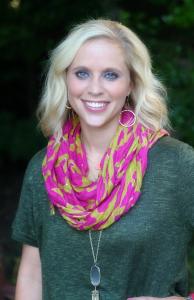 By Kelly Edmiston
By Kelly Edmiston
If you could have lunch with one person who would it be? This is an “ice breaker question” that I have often used in youth ministry settings over the last thirteen years. Good “get to know you” questions are hard to come by. And this question helps me understand what my students are interested in. It helps me know what motivates them and interests them. My students will choose to have lunch with Rihanna or Kanye or President Lincoln. I must admit that I have always had a difficult time answering the question. Recently, I have found my answer. One of the most compelling people in all of history is Mary, the Mother of Jesus. She is who I would choose to have lunch with. Obviously there would be some time travel involved. But in “icebreaker questions” that is allowed.
Mary was the God-bearer. God dwelt within her uterus, nursed at her breasts and woke her up all night every night for the first year or two of his life. Mary was the means by which God brought God’s own self into the world.
Mary was an Israelite woman living in a world in which women were considered the property of their husbands and fathers. They were lower than the “second class.” Women were in a class of their own and one that you didn’t want to be in. Mary is included in all of the gospel writers account of the birth of Jesus but we don’t hear the story from her perspective. We hear her song of praise, but we know nothing of her sleepless nights, her heart burn, or her lack of energy to get out of bed in the morning. We don’t know what fear or excitement danced within her the night of Jesus’s birth. We know that she gave of her body, her blood and her life for the sake of the Savior of the world. And we know that she stored all of these moments up in her heart. How do we know it? She must have told the gospel writers who then wrote down what they remembered of her story. Oh how I wish I could hear the story from her perspective, exactly as she experienced it!
“What was it like to be the first God-bearer to live on the planet?” This would be the first question I would ask her over lunch.
The next question I would ask is this, “What was it like to have been the first God-bearer and then to be kept out of the life of God?”
Mary, like all women of that day, would have been relegated to knowing God, corporately, from afar due to the cultural realities. Their place in the synagogue, the Jewish place of worship, was in the outer courts. The outers courts were on the margins of the synagogue. Also in the outer courts were the gentiles, the sinners, the outcasts of the day. God dwelt in the inner part of the synagogue, the place behind the veil where only priests, who were men, could go. The presence of God was symbolized in the menorah and the scrolls in the inner places and women were marginalized to the outside.
I would ask Mary about this. I want to know what it was like to bear God in her own body and then be marginalized from God’s presence.
This part of Mary’s story is paradigmatic for women in the church today.
Elizabeth Johnson points out that despite women’s God given identity as equal and human persons and the rich range of gifts that they bring, “their worth has consistently been subordinated and demeaned in the theories, symbols, rituals and structures of both society and church, most of which they had no part in shaping.”[1]
Today women are still led to believe that they do not have access to God because of cultural realities of the day. They, too, are kept out of the life of God, corporately, as they are denied the ability to name and know God from their own experience. They are not invited to tell their own story from their perspective, exactly as they have experienced it when it comes to matters of faith. Women all too quickly forget that we are the bearers of God and made equally to reflect God to the world, alongside our brothers.
Women are still marginalized in the church and therefore relegated to knowing God as an outsider looking in. But women were silenced and oppressed, because of their gender, long before even Mary was relegated to the court of women. The boundary marker marginalizing Mary from God’s dwelling in the inner courts was a literal veil. It was the veil that tore at the crucifixion of Jesus.
The veil and the synagogue stratification system kept Mary, and all women, on the margins of their religious community. These were boundary markers that told women how far they could go, where they could participate and what value they had before God.
There are still boundary markers around women in the church today. Some boundaries are externally imposed, like the veil and the temple courts and some are internally imposed.
My friend, Dr. Ben Blackwell, pointed out to me that there’s an ancient tradition (2nd Century) in the Infancy Gospel of James, that Mary helped sew the veil that tore at the crucifixion. It can’t be proven, of course, because we don’t know the details of Mary’s story of history. But Blackwell points out that given her relationship to Elizabeth and Zechariah, a priestly family, that she could have had this type of relationship to the temple and therefore the veil story could be true.[2]
Unknowingly, Mary could have contributed to the system that marginalized her. And as women, we still do this today. We unknowingly contribute to a system set on marginalizing us every time we don’t lean in or speak up in our places of work. We construct our own veils when we sit content in the status quo of patriarchy instead of pushing the system to move and change. We are complicit when we remain silent as our good ideas get claimed as their own by the men in power around us. We contribute to the marginalization of women when we attack other women for charging ahead.
This would be my third question to Mary. If the tradition was true, “What was it like when the veil tore in two from top to bottom at the moment Jesus breathed his last breath?”
The torn veil signifies that all of Gods people, regardless of gender, race, ethnicity, or any other boundary marker, now have access to God. The markers that used to keep women marginalized are no more. Even boundaries that we ourselves have helped create, no longer exist in Christ. Women are given full access, complete equality and inner court privileges when it comes to God’s Kingdom.
At the crucifixion, Mary, the Mother of Jesus, is now invited into the most holy place to know God intimately and without restriction. And women everywhere are invited to know, to name and to experience God fully and without boundaries.
So, how do we erect boundaries around women today because of their gender? Let’s embrace the veil that tore in two.
[1] Elizabeth Johnson, She Who Is, Chapter 5.
[2] Dr. Ben Blackwell pointed this out to me in a online conversation. You can read the Infancy Gospel of James here, http://www.earlychristianwritings.com/infancyjames.html. You can also find Ben’s theology book here. https://www.amazon.com/Engaging-Theology-Historical-Practical-Introduction/dp/0310092760/ref=sr_1_1?keywords=ben+blackwell&qid=1573585483&sr=8-1















